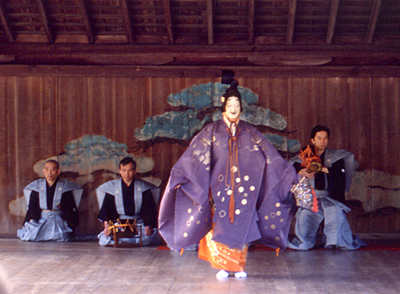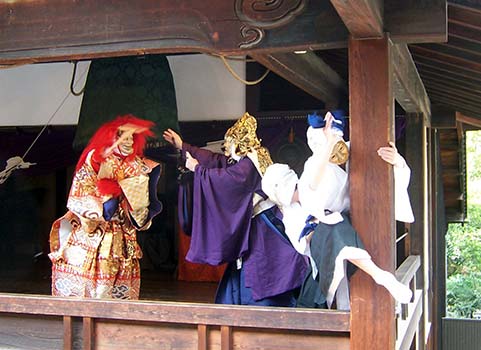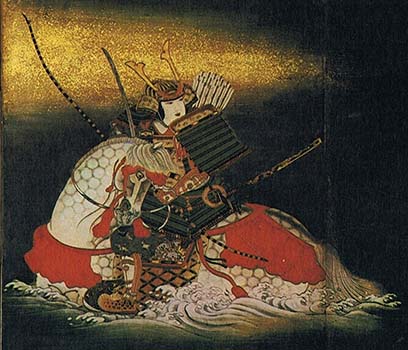Introduction
Japanese Theatre
Noh is the oldest surviving Japanese dramatic form dating back as far as the eleventh century. It combines elements of drama, dance, music, and poetry to retell a well-known story from Japanese literature.

Noh performance at Itsukushima Shrine in Hiroshima, Japan. Image is in the public domain.
Like the Greek tragedy and comedy plays, the Japanese have Nohserious and Kyogen, or comic plays. Look for the similarities in the Greek and Noh plays as you progress through the lesson.

Actors performing a scene from "Dojo-ji" at the Mibu-dera Temple. Image by Chris Gladis is licensed under CC BY-ND 2.0.
Atsumori
At the end of this lesson you will read a Noh play about a young general named Atsumori who is described in The Tale of the Heike (pronounced hay-key) from medieval Japanese literature. Below is an artist's rendering of Atsumori just before he is slain by the warrior Kumagai. But before you read the play, you'll first familiarize yourself with the history and the conventions of the Noh form in this lesson.

Samurai Taira no Atsumori depicted during the Battle of Ichi-no-Tani, painted on a screen. Image is in the public domain.
Following successful completion of this lesson, students will be able to...
- Place Japanese drama in its historical and cultural context.
- Identify and describe the conventions, characters, and structure of Japanese drama.
Essential Questions
- How does history and culture impact the development of theatrical works?
Enduring Understandings
- Historical and cultural events dramatically influence the development of theatrical works.
The above objectives correspond with the Alabama Course of Study: Theatre Proficient standards: 21, 22, 24.
